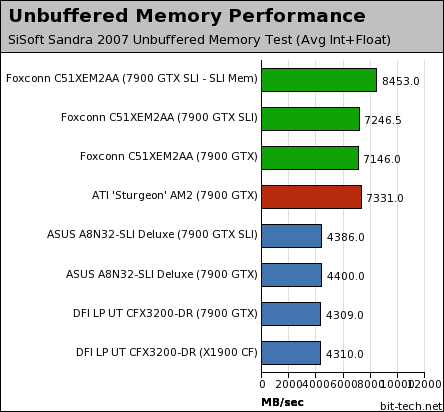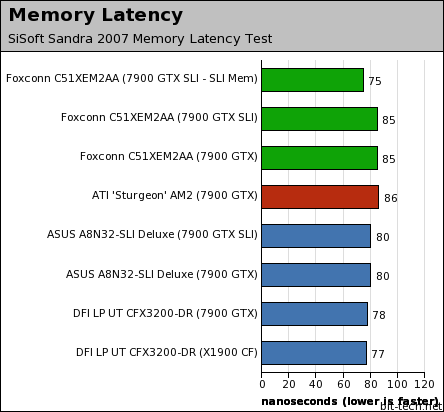Memory Performance:
When the boards are running at
stock speeds, the ATI 'Sturgeon' reference motherboard appears to be faster than Foxconn's nForce 590 SLI motherboard. However, SLI Memory significantly improved memory performance, as the memory clock speeds increased to 1048MHz with 5.0-5-5-15-2T timings. Both of the Socket 939 DDR-based platforms are streets behind when it came to available bandwidth, but things were different when latency was considered.
Typically, the added memory latencies as a result of the socket change increased by around 5-10% over Socket 939 latencies. ATI's reference board doesn't appear to be set up quite as aggressive as the Foxconn board - a combination of memory bandwidth and memory latency means that the two boards match up reasonably well. When SLI Memory was enabled, the Foxconn C51XEM2AA was able to outperform DFI's excellent LANParty UT CFX3200-DR mobo.
HD Playback:
The four motherboards all performed similarly with a single GeForce 7900 GTX installed, with the two socket 939 motherboards maintaining a slight advantage. The CPU load on the ASUS A8N32-SLI Deluxe increased by over 2% when a pair of GeForce 7900 GTX's were installed. On the other hand, both the Foxconn C51XEM2AA and DFI LANParty UT CFX3200-DR motherboards performed very similarly when they were operated in dual card mode.








Want to comment? Please log in.